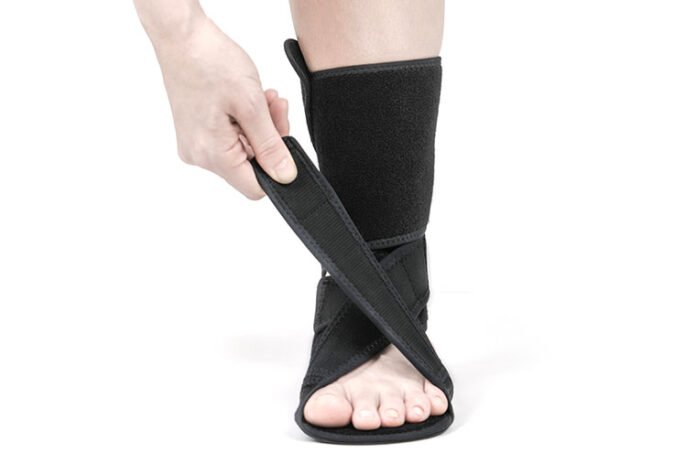Table of Contents
Introduction
We all know how crucial our feet are for mobility and independence. Whether you’re walking, running, or just standing, your feet play a crucial role in allowing you to lead a functioning and fulfilling life. Thus, when your feet experience discomfort or suffer from conditions that affect their health, it can have far-reaching implications on your daily activities. One way to manage such hindrances is with the aid of a foot brace. The process of choosing the right foot brace is pivotal in achieving optimal comfort and functionality.
While buying a foot brace might seem like a simple task – see brace, buy brace – it isn’t always so straightforward. If you select an inappropriate foot brace – one that’s either too tight, too loose, doesn’t provide adequate support, or is not right for your foot type – it could exacerbate the problem, leading to increased discomfort or even further injuries. Thus, where the health of your feet hangs in the balance, choosing the right foot brace becomes an art in itself.
Understanding The Basics
Before delving into the art of selecting foot braces, it’s crucial to understand what they do and why they matter. Foot braces, also known as foot orthosis or orthotics, provide support and immobilization to the foot and/or ankle. They can correct deformities, improve function, ease pain, aid in recovery from fractures, and help in managing certain health conditions, like diabetes and arthritis. Thus, foot braces play an integral part in the overall health and well-being of the foot.
Various factors might necessitate the use of a foot brace. These can range from acute injuries like sprains and fractures, the aftermath of surgeries, chronic conditions like diabetes or bone conditions, and even for corrective measures for foot and ankle deformities. While some people’s needs for a foot brace may be temporary, others may need to make it part of their long-term care and management plan.
Just as no two people are alike, feet can be structurally different as well. Factors such as foot size, arch height, foot width, and even the way you walk (gait) make each person’s feet unique. As such, when choosing a foot brace, keep in mind that one size rarely fits all. Instead, it’s about finding the brace that best caters to the uniqueness of your feet and the specific needs of your condition.
Choosing The Right Foot Brace
Choosing the right foot brace is a process that depends significantly on your specific condition or need. Factors that can influence the type of brace you need include the severity of the issue, the amount of support or immobilization required, your activity levels, and the advice from your healthcare professional.
When selecting a foot brace, comfort should be your priority. The last thing you need when dealing with a foot issue is an uncomfortable brace that makes things worse. Also, evaluate its functionality. Is it providing adequate support or pain relief? Notice the quality of the brace and price; a good-quality brace may cost more but can be a worthy investment in the long run. Often, insurance coverage can also be a key consideration in selecting a foot brace.
The venue for purchasing a foot brace, whether from a physical store or online, also has its advantages and disadvantages. Physical stores offer the advantage of trying on the brace before you buy, getting a true feel for its fit and comfort. However, online stores often offer a broader array of options to choose from at potentially lower prices. Always ensure the seller is reputable and offers a good return policy, as you may not have the chance to try on the brace before purchase.
Different Types Of Foot Braces: A Detailed Exploration
Understanding the range and purpose of different types of foot braces can be instrumental in selecting the one best suited for your needs. Types of braces include ankle support braces, plantar fasciitis night splints, post-operative shoes, and walker boots among others. Perceived as merely a covering, each type holds distinct characteristics that are designed to aid specific foot conditions.
An ankle support brace, for instance, provides additional support to the ankle joint, which can be beneficial for conditions such as sprains, fractures, or instability. A Plantar Fasciitis night splint, on the other hand, helps in treating the discomfort caused by this condition by stretching your foot and calf while you sleep. The alignment of the types of braces with specific foot conditions is crucial for effective management and recovery.
With innovations in medical technology, foot braces have evolved in design and functionality. Lightweight materials, adaptive padding, and customizable molds are adding incredible strides to its preceding counterparts. These advancements not only promise more comfortable and effective braces but also a better overall experience for the users.
Caring For And Maintaining Your Foot Brace
Once you’ve chosen the perfect foot brace, caring for it should become a priority to ensure its longevity. Keep your brace clean; typically, mild soap and water would suffice for this. Keep an eye on the braces’ integrity – check for wear and tear and ensure it’s holding up well. Aim to maintain good hygiene not only with the brace but also with your foot; as a poorly maintained brace can lead to complications like fungal infections.
Over time, it will be necessary to replace your foot brace. Indications that it’s time for a new brace include visible signs of wear and tear, discomfort when using the brace, a drastic change in your condition, or even if you have outgrown the brace. Regularly review your foot brace for these signs to understand when a replacement is in order.
How To Order Custom Foot Braces
For some individuals, generic foot braces may not provide the required comfort or functionality. In such scenarios, consider ordering a bespoke, custom-made foot brace. The process involves an initial consultation with an orthotist who will assess your feet, your gait, and understand the problem in hand. They will then take molds of your feet from which the custom brace will be created.
When deciding whether a custom brace is right for you, consider factors like the severity of your condition, the comfort and efficacy of generic braces, and the costs. After all, a custom-made brace is likely to be more expensive than an off-the-shelf brace but could prove worthwhile by offering better support and a more comfortable fit.
Tips From Professionals – Interviews With Medical Experts
When it comes to foot health, medical professionals are best equipped with knowledge and experience. Their advice can provide valuable insights on the selection and usage of foot braces. They can answer common queries, dispel myths, and offer professional guidelines on ensuring the best outcomes with foot braces.
Medical experts also give a sneak peek into the future of foot braces, offering a glimpse of what to expect in terms of technological advancements and design improvements that could revolutionize foot brace usage. Such insights can be enlightening and give hope to those dealing with debilitating foot conditions.
Conclusion
Selecting the right foot brace involves careful understanding, comparison, and evaluation. The importance of this process can’t be overstated given their potential influence on foot health and overall quality of life. With the myriad of options available in the market, choosing the right one can be daunting.
However, remember that you’re not alone in this journey. Seek advice from healthcare professionals, engage with online communities or forums, and make use of guides such as this one. Remember, prioritizing your foot health today can lead to a much comfortable and pain-free tomorrow.








